The string of numbers found on the side of tires may seem confusing, but it’s easy enough to decode once you know what the numbers stand for. (Photo courtesy of Continental Tires.)
The easiest way to replace the tires on your vehicle is to work with a professional retailer who will help you identify the tires that best match the specifications of the car, as well as your wants and needs for ride quality, handling, and the types of roads and conditions in which you normally drive.
This handy sticker can be found on the driver’s door jamb of all U.S.-market cars and trucks sold in the last few decades.
That said, it doesn’t hurt to know a little bit about how tires are identified and measured, so you can feel more comfortable when going about the replacement process.
Here, we break down the lengthy alphanumeric sequence typically seen on the sidewall of a tire. It may look like computer code, but it’s actually a fairly simple collection of separate metrics, each of which has a different impact on how a given tire performs.
All of the information discussed below can be found on an information sticker typically located in your car’s driver’s-door jamb. Should you ever need to know the specifications of the tires your car was originally sold with, you can get them there.
The Three Biggest Tire-Shopping Mistakes
Section Width
The section width is a measurement of the tire in millimeters across the tread. Common tire widths generally range from 185 to 235. Wider tires can be found on high-performance cars such as the 2018 Chevrolet Corvette, which has rear tires with a 335 section width (about 13 inches). Wider tires usually offer greater dry-surface grip.
Aspect Ratio
The aspect ratio represents the sidewall height of a given tire as a percentage of the section width. Thus, the tire above would have a sidewall height of about 113 millimeters. Aspect ratios typically run between 35 and 70, with 55 to 65 being fairly common.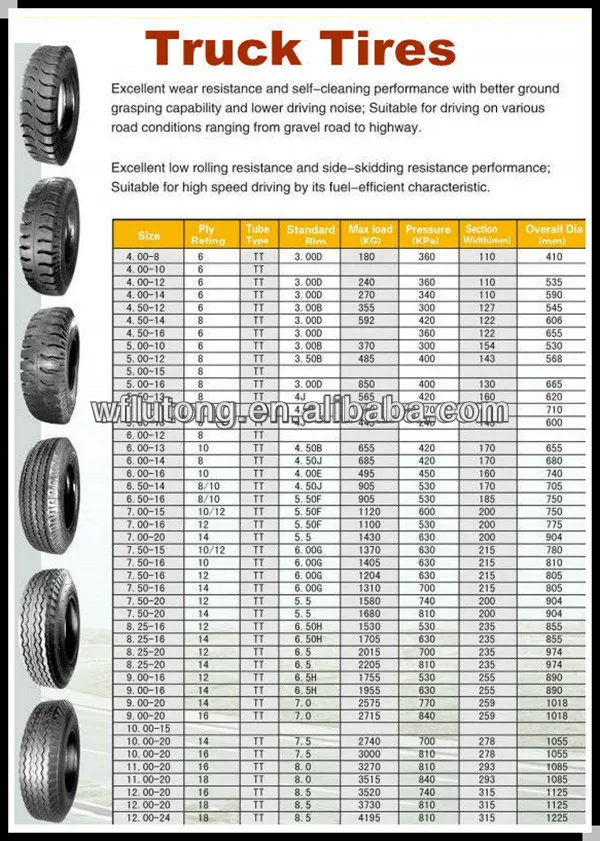 Tires with lower aspect ratios are typically found on sporty vehicles, as they tend to provide sharper steering response and reduced cornering lean. Because of the added cushioning their taller sidewalls provide, tires with higher aspect ratios tend to absorb bumps and other road imperfections better than low-aspect-ratio tires.
Tires with lower aspect ratios are typically found on sporty vehicles, as they tend to provide sharper steering response and reduced cornering lean. Because of the added cushioning their taller sidewalls provide, tires with higher aspect ratios tend to absorb bumps and other road imperfections better than low-aspect-ratio tires.
Construction
The R on the tire above stands for Radial construction. Almost all on-road, conventional-use vehicles are shod with radial tires these days. Other construction codes include B and D. The B code stands for Belted Bias construction, a tire type often found on forklifts and other commercial equipment. Diagonal Bias tires are branded with the D code, and are often found on farm equipment and other off-road-use vehicles.
Starting, Stopping, and Squealing: Testing Tires the Fun Way
Diameter
The tire’s diameter is measured in inches, and represents the inner circumference (where the wheel is mounted).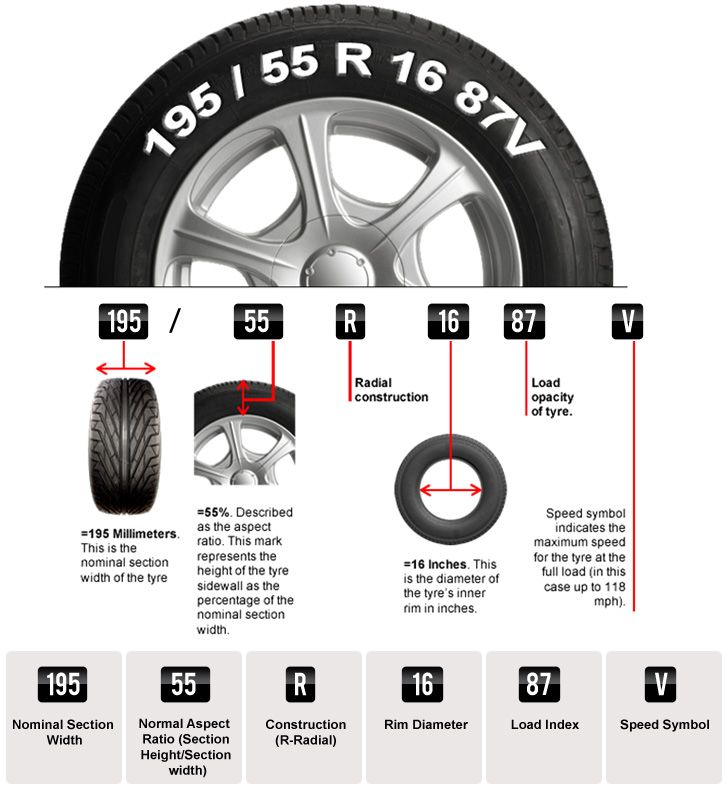 The tire-diameter measurement is always the same as the wheel size, so the above 17-inch tire would fit a 17-inch wheel. Most new vehicles generally come with tires in the 15-to-18-inch range; sporty cars and luxury vehicles (especially crossovers and SUVs) are often equipped with larger tires–typically between 19 to 22 inches. Aftermarket custom wheels and tires can be larger still.
The tire-diameter measurement is always the same as the wheel size, so the above 17-inch tire would fit a 17-inch wheel. Most new vehicles generally come with tires in the 15-to-18-inch range; sporty cars and luxury vehicles (especially crossovers and SUVs) are often equipped with larger tires–typically between 19 to 22 inches. Aftermarket custom wheels and tires can be larger still.
Load Index
The load index is a measure of a given tire’s load-carrying capability. Most brand-name tires have load capacities that comfortably exceed the requirements of the car they are mounted on. Tire load-index ratings on modern passenger vehicles typically range from 75 (853 pounds) to 105 (2039 pounds).
Speed Rating
The speed rating represents the highest speed at which a vehicle equipped with a given tire should be driven. The H speed rating on the tire shown above means the tire is safe for speeds up to 130 mph. It is worth noting that, even if you never intend to drive 130 mph, you should not replace your H-rated tires with tires that have a lower rating. Tires with a given speed rating have specific ride, handling, and heat-dissipation properties as required by a vehicle’s manufacturer, and should not be replaced with lesser equipment. Note also that the Z on the chart to the right is not an actual speed rating, but represents the category of tires rated to exceed 149 mph. When the Z rating was first introduced, it was intended to be the highest rating that would ever be necessary, but as subsequent super cars reached ever-higher levels of performance, the W and Y ratings were added.
Tires with a given speed rating have specific ride, handling, and heat-dissipation properties as required by a vehicle’s manufacturer, and should not be replaced with lesser equipment. Note also that the Z on the chart to the right is not an actual speed rating, but represents the category of tires rated to exceed 149 mph. When the Z rating was first introduced, it was intended to be the highest rating that would ever be necessary, but as subsequent super cars reached ever-higher levels of performance, the W and Y ratings were added.
Extra Credit: Consumer Guide Goes to Teen Defensive-Driving School
Follow Tom on Twitter
Written by: Tom Appel on April 13, 2018.on September 13, 2018.
Whether your current tires are worn or you would like to upgrade, choosing the right tire can be a tricky process. There are so many sizes and widths available. How do you know what tire width to choose for your vehicle type? Does the width of the tires make a difference? We have done the research and can help you in the decision-making process of purchasing the right tires for your vehicle.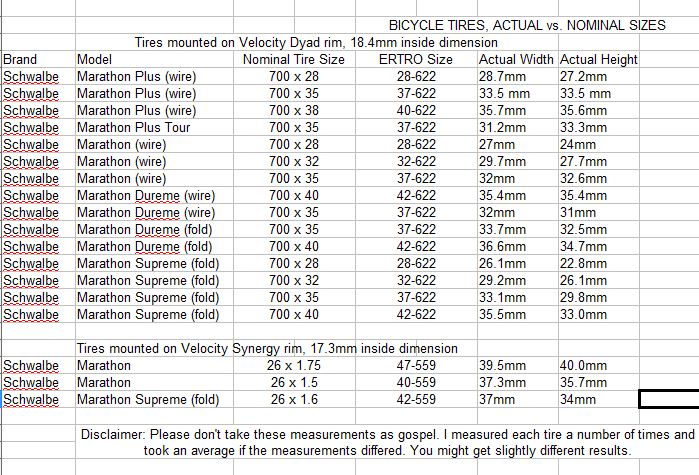
The average tire width varies based on the vehicle type. Here is a list showing the average tire width for five types of passenger vehicles:
Now that you know the average tire width for various vehicle types, let's look more in-depth at how to find the perfect size tire for your vehicle. Understanding what the various numbers and letters on the tire mean will help in this decision. We will also explore if the size and width of a tire really matter. Let's get rolling!
Before you continue reading, let us say we hope you find the links here useful. If you purchase something through a link on this page, we may get a commission, so thank you!
How to Determine Tire SizeThere are several locations you can look to find the suggested tire size for your particular vehicle.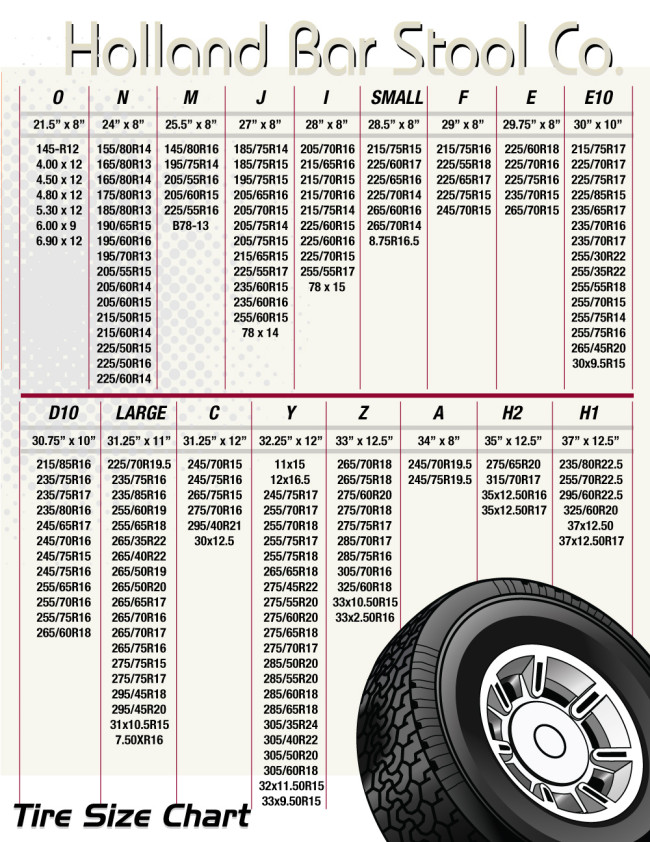 Those locations include your driver's manual, the inside frame of the driver's side door, inside the glove box door, or your current tire's sidewall.
Those locations include your driver's manual, the inside frame of the driver's side door, inside the glove box door, or your current tire's sidewall.
A tire size calculator may also help you decide if you've selected the right tire for your vehicle. If you are unsure as to how to translate all of those numbers and letters into something meaningful, let's examine their meaning.
There are three common prefixes you will find in this location:
Most vehicles will have "P" as their prefix. "LT" tires are used on vehicles made for hauling larger loads such as 3/4-ton pickup trucks, work vans, or work trucks.
The three numbers immediately following the prefix will indicate the width of the tire.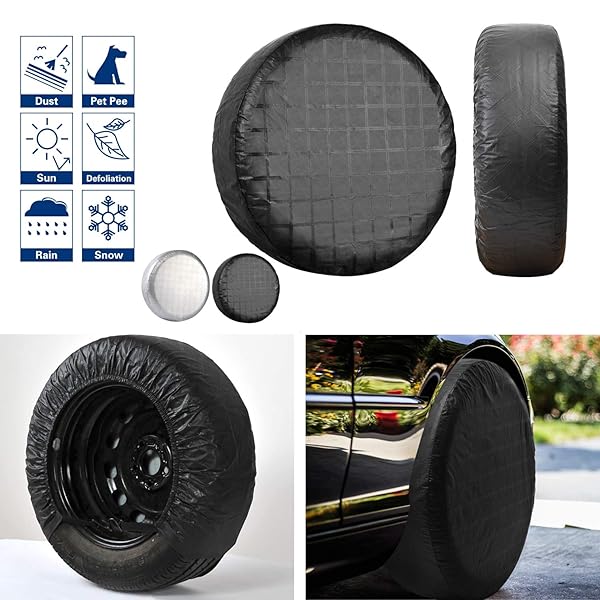 Tire width is measured using the metric system and shown in millimeters.
Tire width is measured using the metric system and shown in millimeters.
Tire width refers to the measurement from one sidewall to the other when mounted properly on the tire rim. Tires for passenger vehicles can range from 175 to 275 mm.
This ratio is the height of the tire's cross-section to its width. This essentially helps you identify the height of your tire's profile.
Aspect ratios are given in percentages. Based on the tire in our above image, its aspect ratio would be 55%, meaning the height is equal to 55% of its width. The larger the sidewall, the larger the aspect ratio.
The letter "R" will be the most common type of construction seen here. This means the tires are radial. Radial construction means the layers run in a radial direction.
Essentially, the tire's internal ply cords run perpendicular to the tire's rotation. Occasionally, you may see a "D" referring to diagonal, now only used on some trucks and trailers.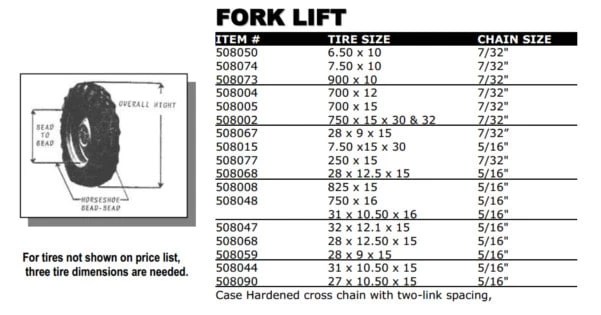
This number indicates the size of the rim the tire is intended to fit. This measurement is given in inches. Our diagram above shows the rim size would be 16 inches. Rim sizes can vary between 15 and 20 inches on most passenger vehicles.
Load IndexA tire's load index correlates to the load-carrying capacity when it is properly inflated. Basically, it tells you how much weight in pounds your tire can support.
The following chart shows a load index number and corresponding load. The tire in our example has a load index of 91, which means each tire can support 1,356 pounds. The car could support a total of 5,424 pounds (1,356 x 4 tires = 5,424).
The speed rating is the final figure on the tire. This letter corresponds to the maximum speed capability of a tire. However, this isn't a recommended speed.
We caution you to always follow the speed limit. The following chart shows you the speed rating and corresponding speed.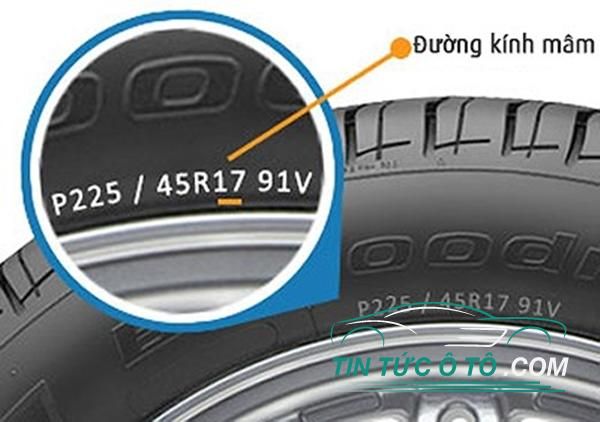 The speed rating on our tire diagram above is "S." According to the chart, this tire is rated for up to 112 mph.
The speed rating on our tire diagram above is "S." According to the chart, this tire is rated for up to 112 mph.
Tire size definitely matters! Not only does it change the cosmetic appearance of your vehicle, but can also affect performance.
Wider tires are also becoming a trend in the auto industry. Take a look at some of the advantages and disadvantages of wider tires as we delve further into sizing below.
A wide tire is considered as any tire wider than the factory tire included with your vehicle. As mentioned earlier, you can find this recommended size in various locations of your vehicle.
It is possible to increase the tire width on your vehicle's tires. In doing so, safety considerations must be taken. As a general rule, it is safe to increase the tire width by 20 mm, or 5 to 10% more than the original tire width.
Considering the width of your rims is also important when increasing the width of your vehicle's tire.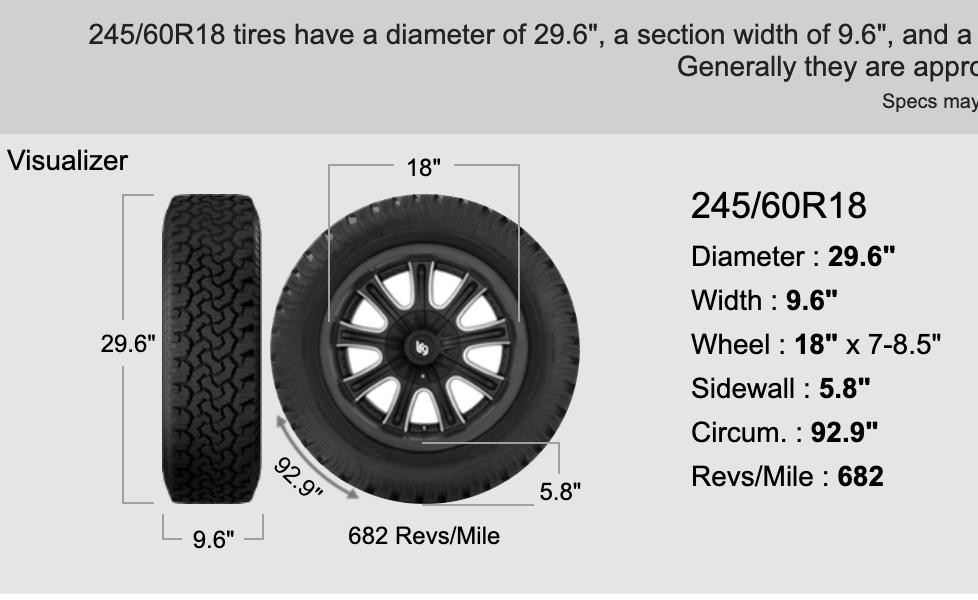 Increasing tire width too much can cause the tire to rub on the fender or can result in improper tire wear. This can cause unsafe driving conditions.
Increasing tire width too much can cause the tire to rub on the fender or can result in improper tire wear. This can cause unsafe driving conditions.
There are some advantages to upgrading to wider tires. They can have a large impact on the performance of your vehicle. Depending on what you are trying to achieve, wider tires may be a good choice.
Do They Provide Better Traction?Having a wider contact area with the road is one way to improve the traction of your car. On the other hand, skinnier tires have more pressure per square inch, also increasing traction.
In this category, wider and narrow tires can both provide better traction. Consider the types of roads, terrain, and driving conditions you will be navigating when making this decision.
Actually, wider tires are better for driving in rainy, wet conditions. The small slits seen on the tire's tread are known as sipes.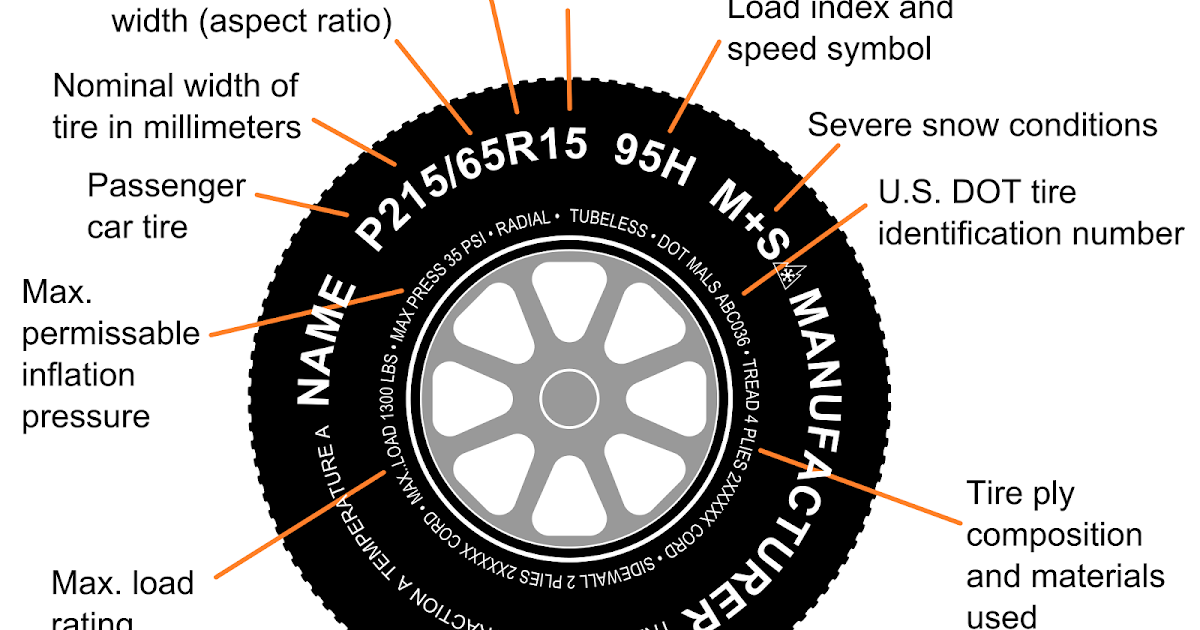 The surface area of a wider tire is larger, thus resulting in more sipes.
The surface area of a wider tire is larger, thus resulting in more sipes.
These sipes work by helping trap and remove water from the contact surface. Narrow tires also have sipes, but because they are smaller, there are fewer of them.
Having a wider tire will increase the contact area of your tire to the pavement. This also increases the amount of grip, causing your vehicle to increase brake speed.
Wider tires have better thread and stiffer sidewalls, resulting in easier handling or cornering. As discussed earlier, more contact area is present with wider tires, also aiding in better handling.
While there are several advantages to buying wider tires, there are also some disadvantages. Being aware of the disadvantages of wider tires may end up changing your mind about purchasing a wider tire.
More friction is generated from wider tires, thus resulting in greater fuel consumption.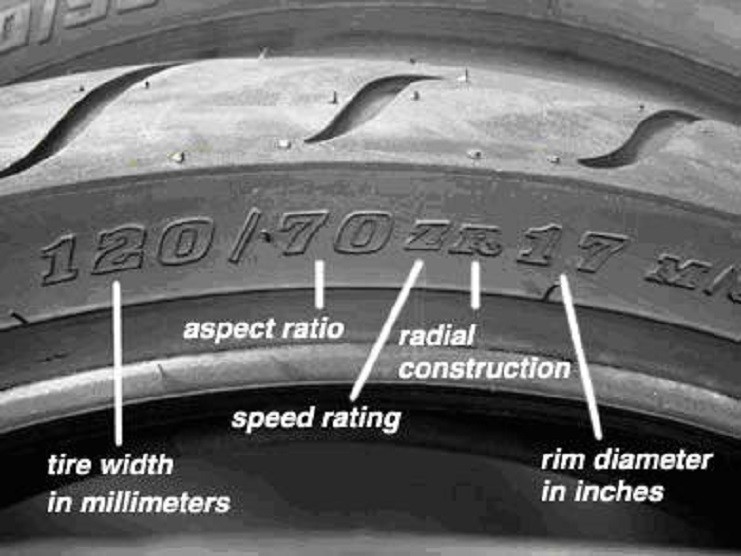 The less friction your car produces, the less steering effort is needed allowing less fuel use.
The less friction your car produces, the less steering effort is needed allowing less fuel use.
Larger and wider tires are heavier and less aerodynamic, which causes the engine to work harder. This will also increase the vehicle's fuel consumption and negatively affect your wallet.
If you want a nice smooth ride, wider and bigger tires may not be for you. In most cases, larger tires result in rougher riding conditions. Due to wider tire size, road noise may also be increased.
Most likely, you will pay more for a wider tire. Because the tire is larger, it is going to cost more to make. Wider tires are not as easily found on the market as your standard tires, resulting in higher prices. Having wider tires installed may also cost more.
In most circumstances, it is best to operate your vehicle with the same sized tires that it came equipped with. After all, it came equipped with those tires to ensure maximum safety and optimum performance.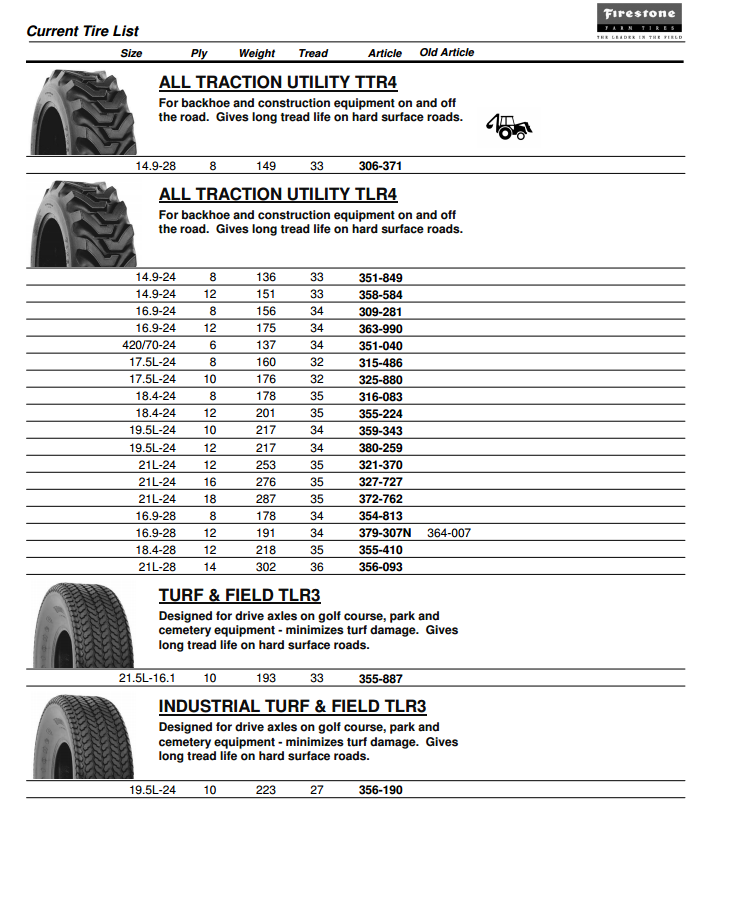 Many factors should be considered when choosing tire size.
Many factors should be considered when choosing tire size.
Upgrading tire size can be a costly investment, and ultimately, the decision comes down to what you are trying to accomplish. Whether it is for cosmetic or performance purposes, wider tires come with advantages and disadvantages.
If you would like more information on tire performance, click on one of the following links:
Do Tires Affect Acceleration, Speed, And Performance?
Do Tires Wear Faster On The Highway?
Marking car tires for most motorists is not an easy task, since many are not familiar with the designations indicated on the outside of the rubber walls.
Meanwhile, the wheel diameter is a parameter with which you can choose tires for a car that meet the technical characteristics of the vehicle. These parameters are important when choosing summer or winter wheels, and during a scheduled tire change in order to improve individual machine characteristics.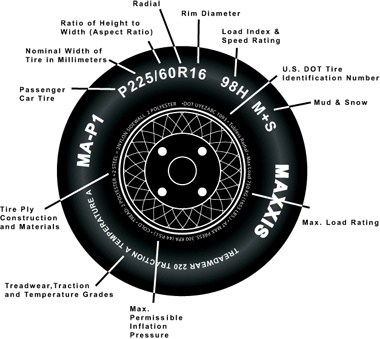
Before choosing a car wheel diameter, it is important to understand what tire profile and rim offset are needed to obtain the recommended values for installation. To ensure the best handling, stability of the car on the road and high cross-country ability, it is necessary to select parameters that correspond to the technical regulations of the car, operating conditions. Below is information about tire designation and construction, as well as how you can choose tires using a tire calculator.
Despite the large amount of information, designations on tires that the manufacturer indicates, many drivers confuse the wheel radius and diameter, or even understand one parameter under different concepts. In practice, rubber manufacturers do not use the "radius" parameter, since it means the distance from the center of the tire to its edge. This wheel measurement is not used.
Tire manufacturers measure rim size in inches, so tire construction and rims are nothing more than a diameter.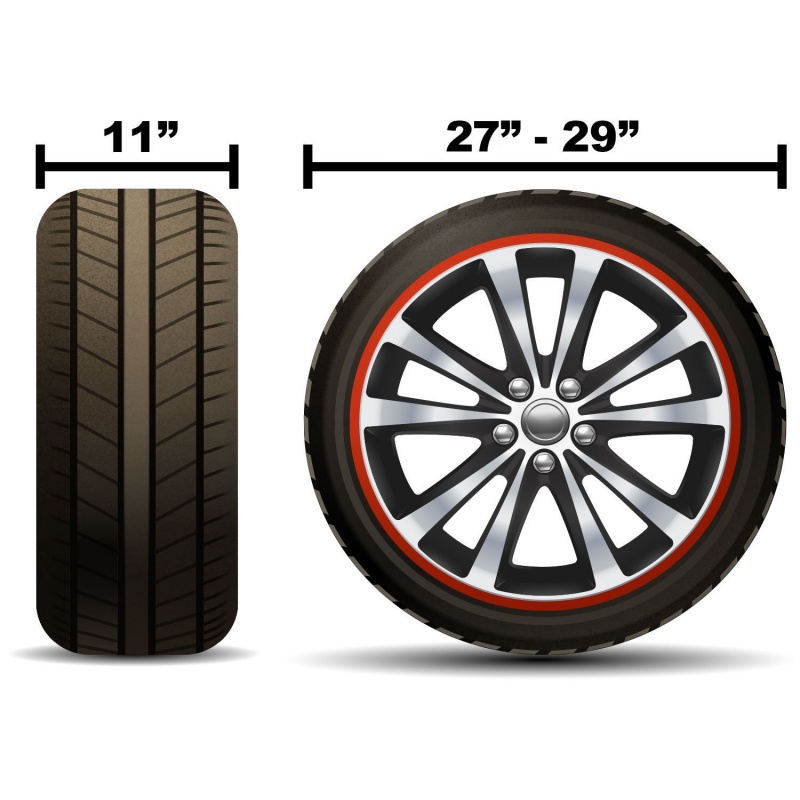 By it is meant the distance between opposite edges of the tires. Circumference is measured along a line through the center of the wheel. This parameter is used more often, since it is easily measured, and also shows the optimal values \u200b\u200ballowing you to accurately select a wheel or tire for any car. Other indicators stand out:
By it is meant the distance between opposite edges of the tires. Circumference is measured along a line through the center of the wheel. This parameter is used more often, since it is easily measured, and also shows the optimal values \u200b\u200ballowing you to accurately select a wheel or tire for any car. Other indicators stand out:
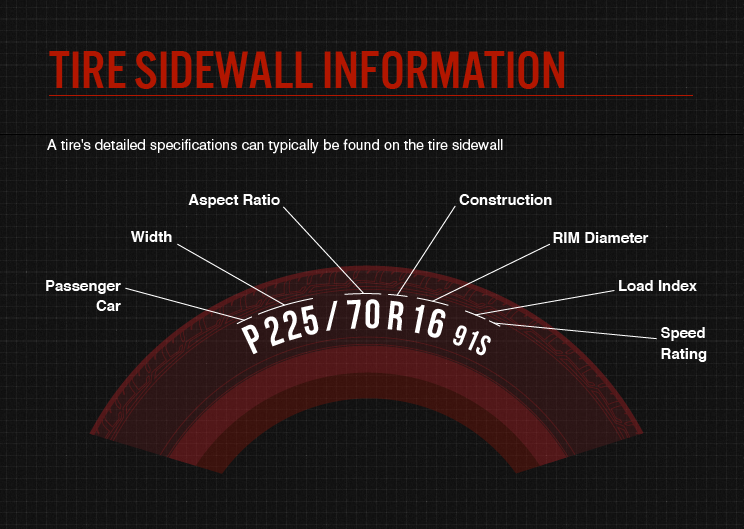
It is worth noting that the letter R has nothing to do with the radius, as many people think. It indicates the type of tire - there are radial and diagonal models. The first, which are labeled R, differ in the structure of the frame. Here the cord is stretched between the sides without overlapping threads. The elastic shell of the wheel is fitted with a special belt made of durable cord, which does not deform under load. This technology makes the design of tires durable, improves the grip of rubber on the road.
Bias tires have a similar tread, identical radius, but differ in thread connection. Unlike models marked R, here the threads in the structure are located diagonally between the sides. The belt layer, which holds and stabilizes the tires, is less stable during rolling, which leads to rapid tire wear.
Manufacturers offer tire models with different parameters and radius. Depending on the type of car, drivers can choose between 13 and 20 diameter car wheels, as well as the rim width, which is measured in inches. There are significant differences between the models. They differ in profile height in centimeters, speed qualities, wear resistance. Since it is not easy to measure which wheels will fit a car on your own, many automakers indicate the recommended wheel sizes on the car door pillar.
There are significant differences between the models. They differ in profile height in centimeters, speed qualities, wear resistance. Since it is not easy to measure which wheels will fit a car on your own, many automakers indicate the recommended wheel sizes on the car door pillar.
To install the wheels correctly, tires must be selected according to their size. This parameter is applied to the sidewall of the rubber in the following form: 225/45/R 18 84T. You can decipher the marking in the following way:
Summer Drive Protection Sound Comfort
Rating:
4. 5
5
Tires Goodyear Eagle F1 Asymmetric 3 SUV
Summer Drive Protection
Rating:
4.5
Tires Goodyear Eagle Sport TZ
Summer Drive Protection
Rating:
4.5
Tires Goodyear EfficientGrip 2 SUV
Summer Drive Protection Run On Flat
Rating:
4.5
Tires Goodyear EfficientGrip Performance
Winter Drive protection
Tires Goodyear UltraGrip Arctic 2 SUV
Winter Drive Protection Sound Comfort
Rating:
4. 5
5
Tires Goodyear UltraGrip Ice 2
Winter Drive Protection Sound Comfort
Rating:
4.5
Tires Goodyear UltraGrip Ice SUV
Winter Drive protection
Tires Goodyear UltraGrip Performance+ SUV
All season Drive Protection
Rating:
5
Tires Goodyear Vector 4Seasons Gen-3 SUV
Summer Drive Protection Run On Flat
Rating:
4
Tires Goodyear Wrangler HP All Weather
All season Drive Protection
Rating:
4.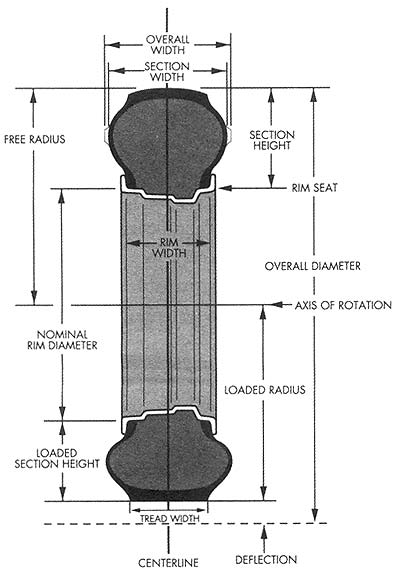 5
5
Tires Goodyear Vector 4Seasons
Summer
Rating:
4.5
Tires Goodyear Wrangler All-Terrain Adventure with Kevlar
Summer Drive Protection
Rating:
4.5
Tires Goodyear EfficientGrip SUV
Summer Drive Protection Run On Flat
Rating:
4
Tires Goodyear Eagle F1 Asymmetric SUV
Tire size selection is essential for safe driving. If you choose hub mounts, take into account the radius and height of the profile, you can ensure good vehicle stability on any road surface, ensure clear control and smooth running. For best results, the rim width in inches should be in accordance with the manufacturer's recommendations.
If you choose hub mounts, take into account the radius and height of the profile, you can ensure good vehicle stability on any road surface, ensure clear control and smooth running. For best results, the rim width in inches should be in accordance with the manufacturer's recommendations.
On the side of any tire, you can find a combination of different markings, understanding which will help to obtain information about rubber and its properties. On the outside of tires, manufacturers indicate:
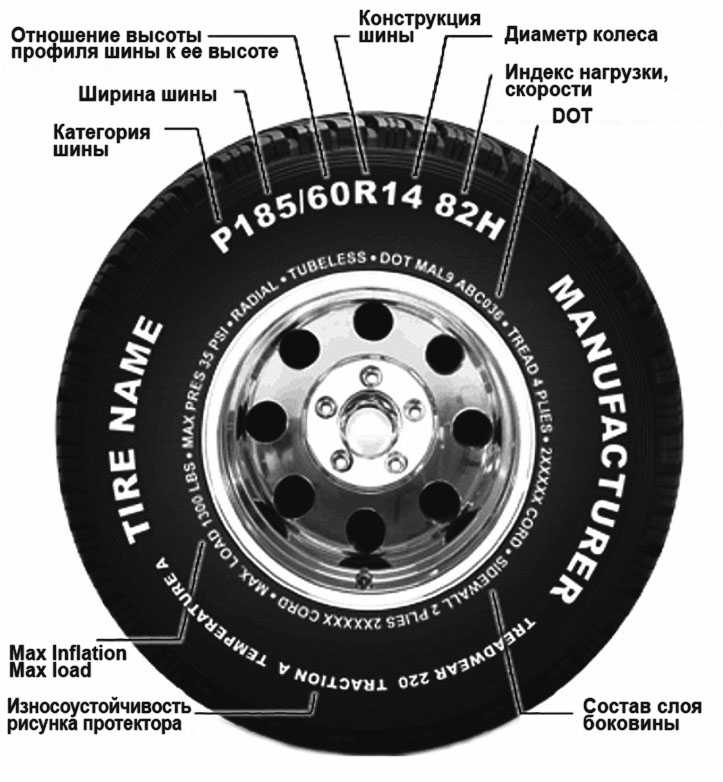 It is incorrect to determine the difference in the total number of tires, since such values will turn out to be too high. This will adversely affect the safety of the structure.
It is incorrect to determine the difference in the total number of tires, since such values will turn out to be too high. This will adversely affect the safety of the structure. 
As additional information that affects the quality of tires and vehicle stability on the road, the tread wear indicator is indicated. With it, motorists can determine when tires need to be changed. This indicator is also measured by the residual height of the tread pattern. The date of manufacture of the tires, which is marked with three digits, remains important. They represent the week and year of manufacture.
Based on the above, we conclude that you can choose the wheels for the car yourself. Despite the numerous markings, they are easy to decipher, since each manufacturer indicates the required dimensions on the rubber surface.
Very often one hears phrases like: “What wheel radius do you have, fifteenth?” Or “I have a radius of 16, but I’ll put the seventeenth for the winter so that the car is taller” . .. Such words can be heard both from the lips of people who are far from cars, and from “as it were professionals”, such as tire workers or sales managers in a car dealership .
.. Such words can be heard both from the lips of people who are far from cars, and from “as it were professionals”, such as tire workers or sales managers in a car dealership .
Some things sound boring and hard to remember, but you need to know them. Especially for car enthusiasts. Especially those who consider themselves experts and have their own opinion on any occasion. The devil is in the details, and this article is about one such detail.
A lot of people don't even understand what I'm getting at. “Well, radius, so what? I have wheels 195-65R15, radius 15, everything is written, what are you trying to be smart about ?! Here's what I'm thinking. R15 has nothing to do with radius. Neither R nor 15.
Now on the Internet you can find a lot of information, only such trifles as the marking of car tires are not among the most popular.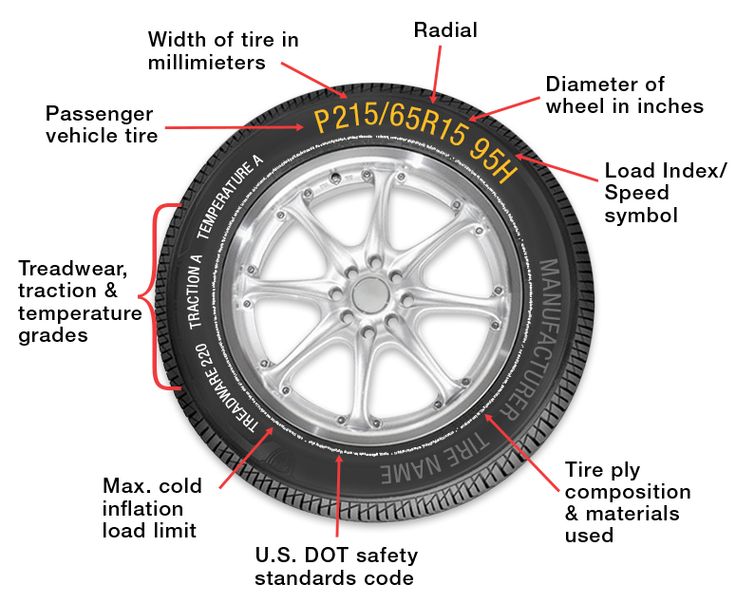 We better discuss engine power or the number of "buns" in the cabin, right? And we will leave the choice of wheels to the manager in the store. Or ask a friend. He definitely knows! He already has a third car!
We better discuss engine power or the number of "buns" in the cabin, right? And we will leave the choice of wheels to the manager in the store. Or ask a friend. He definitely knows! He already has a third car!
In fact, it won’t hurt to understand these boring numbers even just for general development. Moreover, this will help save money and influence the behavior of the car, but more on that later. So far - pure educational program, so that later you can understand each other well.
So, 195/65R15. Classic case. Squat down next to your car. The first number is the width of the running part of the tire, roughly speaking, the width of the tread. Expressed in millimeters. That is 195 mm. is the width of your wheel. With the understanding of this number, most of the problems are not.
Through a fraction, 65 is the value of the profile. Expressed as a percentage of the width.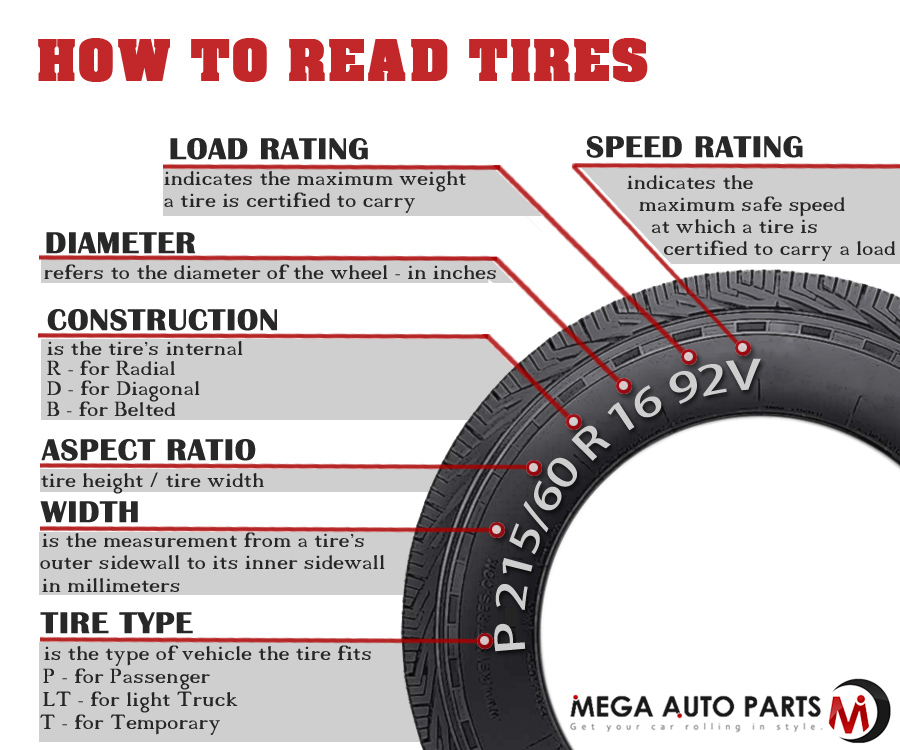 Not in millimeters! The profile is the part of the tire that sticks out above the rim. Sidewall. That is, the height of this sidewall will be 195x65% = 125.75 mm. Not 65mm. And not something else. Moreover, it clearly follows from this scheme that the height of 65% with a width of 195 will be one, and if the tire is marked (conditionally) 225/65R15, it will be completely different! 225x65% = 146.25 mm. Although the numbers 65 are the same!
Not in millimeters! The profile is the part of the tire that sticks out above the rim. Sidewall. That is, the height of this sidewall will be 195x65% = 125.75 mm. Not 65mm. And not something else. Moreover, it clearly follows from this scheme that the height of 65% with a width of 195 will be one, and if the tire is marked (conditionally) 225/65R15, it will be completely different! 225x65% = 146.25 mm. Although the numbers 65 are the same!
R stands for the radial construction of the tire, or rather, the way the metal cord is laid inside it. The tire design used to be bias-ply, but that was a long time ago. Now you almost never see “diagonal” tires, they are all completely radial, and the letter R will not tell anyone anything new, it will only cause disputes about the notorious radius ...
And finally, the number 15. This is the diameter. The diameter of the landing part of the tire, the inner diameter, the part that is in contact with the disc. Expressed in inches. 1 inch \u003d 2.54 cm. That is, 15x2.54 \u003d 38.1 cm This is also the outer diameter of the disk, if someone has not guessed ...
Expressed in inches. 1 inch \u003d 2.54 cm. That is, 15x2.54 \u003d 38.1 cm This is also the outer diameter of the disk, if someone has not guessed ...
And then the fun begins. We can play with these numbers if we want to put other tires (rims) on the car. Ideally, the main thing is that the overall diameter does not differ, or differs slightly. Example.
The wheel 195 / 65R15 has the following overall diameter: 38.1 cm - inside, plus 125.75 mm x2 \u003d 251.5 mm (there is a profile both above and below). Converting to centimeters for simplicity, we get 38.1 cm + 25.15 cm = 63.25 cm. That's how! This is the total wheel diameter.
Now, if you want to put other wheels on, the owner of the car must understand the following: automakers understand this figure in the same way as we do. Given the diameter of the wheel, the suspension, brake system and body are designed.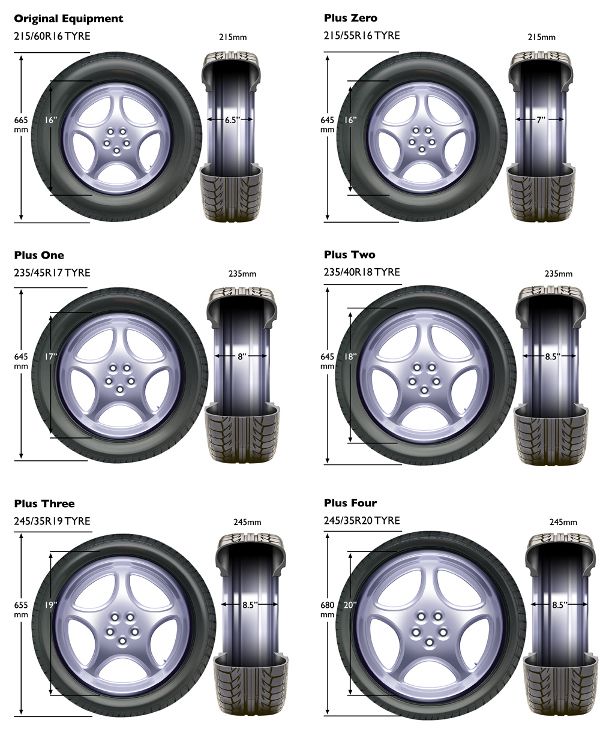 Therefore, for the same car model (for example, for the Volkswagen Polo sedan), three wheel sizes are officially allowed. The simplest version is content with 175/70R14 (overall diameter 60.06 cm), 185/60R15 (60.3 cm) and 195/55R15 (59.55 cm).
Therefore, for the same car model (for example, for the Volkswagen Polo sedan), three wheel sizes are officially allowed. The simplest version is content with 175/70R14 (overall diameter 60.06 cm), 185/60R15 (60.3 cm) and 195/55R15 (59.55 cm).
It turns out that the “wheel by 14” is MORE, albeit slightly, than the wheel by 15 in the case of 195/55. This is to the question raised above, about how to put more wheels for the winter ... You need to carefully calculate everything. Will a larger diameter number also mean a larger wheel size overall? Not always.
By increasing the size of the disk, we must reduce the height of the profile, otherwise the wheel will simply start to cling to the arch, not to mention such more fundamental qualities as handling. Of course, the margin often remains and it happens that by “playing” with the tire width and profile height, you can really get a couple of millimeters of clearance without sacrificing anything else.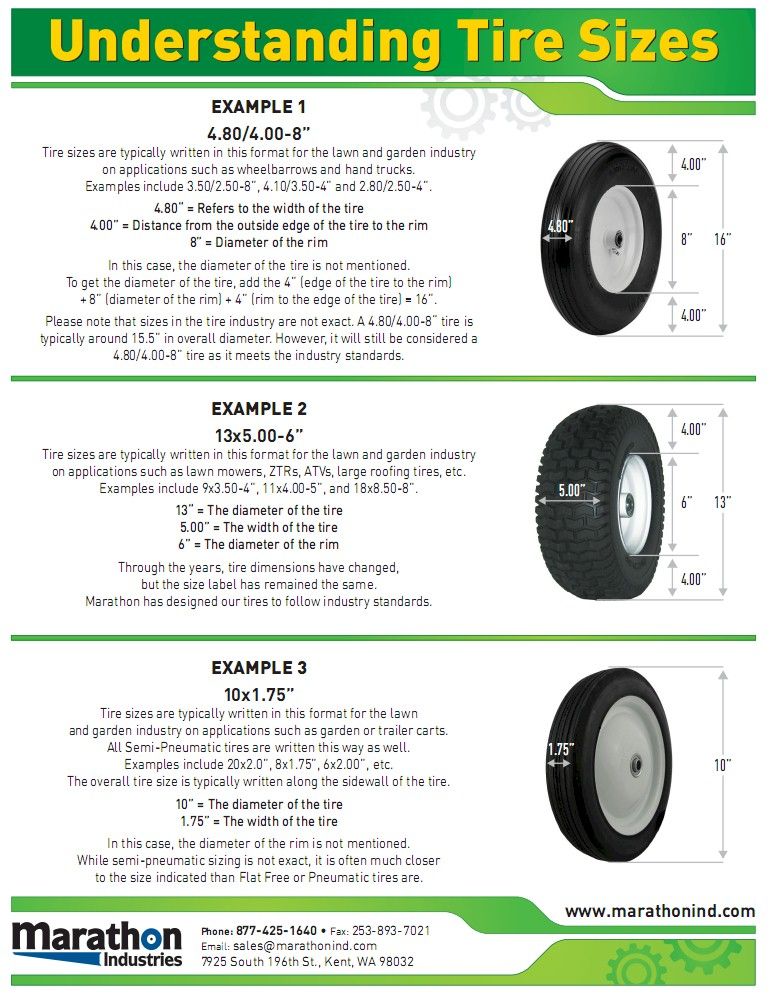
A simple calculation will show that within the same diameter - 14 - 175-70 and 185-65 and 205-60 are applicable, if there is a desire and an opportunity to put wider tires ... A car on wheels with a lower profile height will be controlled sharper and more accurately, but will inevitably suffer smooth running. And the safety of the discs may be in question, especially when they fall into a deep hole with sharp edges. A low profile will simply not be able to "absorb" the impact energy and it will go further - into the disk. Always keep this in mind when buying wheels and don't forget the simple truths.
This article was written as part of the 2015 Authors Competition.
Read the best works here.
Authors competition practice
Articles / Used cars 5 reasons to buy and not to buy Volkswagen Passat CC "King of the track, but in the city he tears everyone"; "does not go at all"; "model of reliability"; “is pouring, without waiting for 100 thousand”; “great interior, quality materials”; “the interior is miserable, like in Polo”; ". .. 397 5 0 11/27/2022
.. 397 5 0 11/27/2022
Articles / Tests Taxi fleet test: check what you know about the first generation Renault Logan "Citizen of the World", known to us under the name Logan and produced in the world under several different brands, this year celebrates its 18th anniversary. In honor of the "coming of age" of this involuntary love... 2057 0 2 11/26/2022
Articles / New So that's what you are, Moskvich 3: getting acquainted with the car at the official start of production Yesterday, November 23, the Moscow Automobile Plant, which for a long time existed only in the status of a Renault Russia enterprise (until 2014 it was called Avtoframos) and stood idle for more than six months after the.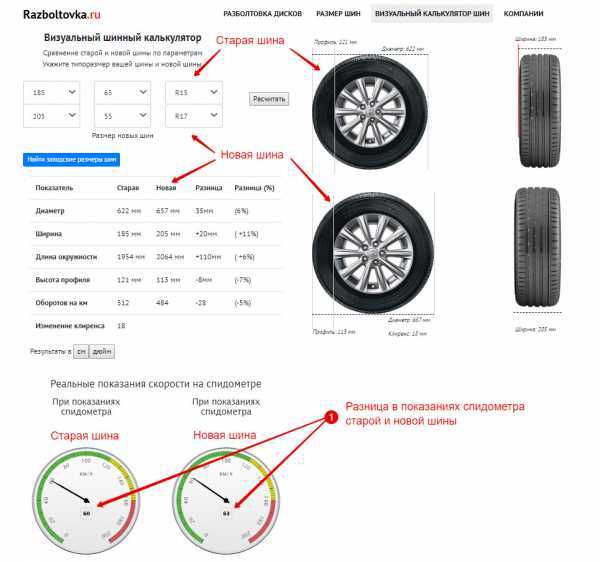 .. 8762 12 3 11/24/2022
.. 8762 12 3 11/24/2022
Test drives / Test drive Haval Dargo vs Mitsubishi Outlander: the dog is barking, the stranger is coming In the Haval dealership in the south of Moscow, life is in full swing: buyers look at cars, communicate with managers and sign some papers. While I was waiting for the test Dargo, the same cross... 17612 7 205 13.09.2022
Test drives / Test drive Motor from Mercedes, emblem from Renault, assembly from Dacia: test drive of the European Logan 1.0 It would seem that what's new can be told about the second generation Renault Logan, known to every Russian taxi driver, as they say, up and down? However, this car has.